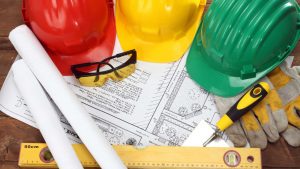Key Health and Safety Regulations Impacting UK Construction Firms
In the commercial construction sector, safety is not just a priority; it is a rigidly enforced standard governed by an extensive regulatory framework. In the UK, this framework is both comprehensive and mandatory, designed to minimise risks and prevent harm to individuals engaged in construction activities. The Health and Safety at Work etc. Act 1974 lays the foundation for workplace safety, but it is the construction-specific regulations that provide the detailed directives for the industry. This article examines key legislation and its implications for commercial construction firms operating within the UK.
The Regulatory Landscape
The UK has established a robust legal structure that mandates the health and safety protocols within the construction industry. The focal point of this legislation is the Construction (Design and Management) Regulations 2015 (CDM 2015), which delineate the responsibilities of all parties involved in construction projects.
Construction (Design and Management) Regulations 2015 (CDM 2015)

CDM 2015 is a pivotal piece of legislation that outlines the health and safety responsibilities of everyone involved in construction work. Its primary objective is to ensure that health and safety considerations are embedded throughout the lifecycle of a construction project, from conception to completion.
Under CDM 2015, duties are assigned to various roles including the client, designers, principal designer, principal contractor, and contractors. The client, who has the project, has a significant responsibility to ensure that the construction project is set up so that it is carried out from start to finish in a way that manages health and safety risks.
Principal Designers have a duty to plan, manage, and monitor the pre-construction phase, considering health and safety aspects in the design work. Principal Contractors are tasked with planning, managing, and monitoring the construction phase, ensuring that the plans set out are followed. Contractors, who make up the workforce, must follow the plans laid out and receive the necessary information, instruction, and training to carry out their jobs safely.
The Health and Safety at Work etc. Act 1974

This Act forms the bedrock of health and safety law in the UK. It sets out the general duties which employers have towards employees and members of the public, the duties that employees have to themselves and to each other, and the role of the Health and Safety Executive (HSE) and local authorities in enforcement.
Employers must provide a safe working environment and ensure the health and welfare of their employees. This includes conducting risk assessments, providing training and necessary protective equipment, and establishing emergency procedures.
The Management of Health and Safety at Work Regulations 1999
These regulations build on the Health and Safety at Work etc. Act by setting out what businesses must do to manage health and safety. It’s about having the right people, with the right skills, qualifications, and experience, and organising them to ensure health and safety measures are followed.
A fundamental requirement is for employers to conduct risk assessments to identify measures to control risks in the workplace. It also includes provisions for expectant mothers, young workers, and the appointment of competent persons to manage health and safety.
The Workplace (Health, Safety and Welfare) Regulations 1992
This set of regulations applies to most workplaces and covers a wide range of basic health, safety, and welfare issues. It stipulates the standards for the work environment in construction sites, including ventilation, lighting, temperature, and sanitary conveniences.
Reporting of Injuries, Diseases and Dangerous Occurrences Regulations 2013 (RIDDOR)
RIDDOR places a legal duty on employers, self-employed individuals, and those in control of premises to report specified workplace incidents. This includes certain occupational diseases, specified dangerous occurrences, and work-related deaths.
The Personal Protective Equipment at Work Regulations 1992

These regulations require that Personal Protective Equipment (PPE) is supplied and used at work wherever there are risks to health and safety that cannot be adequately controlled by other means. PPE is vital in construction where risks cannot always be controlled through other methods.
Implications for Construction Firms
Non-compliance with these regulations can result in substantial fines, legal action, and a tarnished reputation. Construction firms must ensure that they have robust health and safety management systems in place, regular training for all employees, and a culture that promotes safety awareness.
Compliance also requires firms to keep abreast of changes in legislation, with the HSE regularly updating guidance and the law reflecting new risks and technologies. The introduction of building safety legislation, following high-profile incidents such as the Grenfell Tower fire, highlights the ever-evolving nature of the regulatory environment.
For construction firms, understanding and adhering to these regulations is not merely a legal requirement but a moral one. Prioritising the health and safety of all parties involved in a construction project should be the cornerstone of every firm’s operational ethos. It is crucial for firms to embed health and safety into every aspect of their work – from the boardroom to the site.
In conclusion, the commercial construction industry in the UK is regulated by a detailed and strict set of health and safety laws. These laws are designed not just for compliance but for the welfare of individuals and the collective success of the industry. The key to navigating this intricate legislative landscape lies in education, training, and a committed approach to upholding the standards set forth by these essential regulations.









Leave feedback about this